WASHINGTON CROSSING – The Delaware River Joint Toll Bridge Commission has begun to set the stage for possibly replacing its 119-year-old weight-restricted operationally challenged Washington Crossing Toll-Supported Bridge.
The Commission recently posted a request for proposals (RFP) to procure a consulting team that would conduct a multi-year environmental review process identifying and examining numerous issues and hurdles before a new bridge could be designed and built.
The RFP was issued in mid-January. The Commission hosted a forum with interested consulting firms later that month. This first-step procurement process is anticipated to end with the award of a contract to the most responsive consulting team at the Commission’s June meeting.
The current Washington Crossing Bridge has been a bane to generations of motorists. It is the narrowest of the Commission’s 18 vehicular bridges, with a 15-foot-wide roadway that often forces motorists to a crawl in 7.5-foot-wide lanes — one in each direction. In comparison, the width of an interstate highway travel lane is 12 feet. Minor fender-bender-type incidents and broken sideview mirrors are frequently reported at this location. The bridge pre-dates mass-production of automobiles and was constructed in 1904-05 for a locally owned cash-strapped private company that charged tolls to cross it in either direction by horse, vehicle, or on foot. The bridge has been publicly owned and operated without a toll since 1922. The Commission has owned the bridge since July 1, 1987.
The RFP states that the bridge’s steel through-truss superstructure “has experienced structural deterioration and does not meet current design standards, which creates reliability and safety concerns.” The Commission has reached the point where it is considering replacing the bridge.
The major task to be completed under the pending RFP is to advance a potential bridge replacement through the National Environmental Policy Act (NEPA) process and preliminary engineering. The Federal Highway Administration says NEPA mandates that agencies “consider the potential environmental consequences of their proposals, document analysis and make this information available to the public for comment prior to implementation.”
The Commission’s ultimate objective with the NEPA process would be the acquisition of a Finding of No Significant Impact (FONSI) from an applicable lead federal oversight agency. Should a FONSI be issued, the Commission could then advance a potential replacement bridge from concept to actual design and construction. In addition to environmental considerations, the NEPA process would also examine other potential issues such as impacts to recreation, cultural history, and communities.
The underlying goal of the process is to improve mobility and provide a safe and reliable river crossing for vehicles and pedestrians.
Environmental considerations would include preservation of the quality of the existing Delaware River habitat and its associated resources, including wetlands, threatened and endangered plant and animal species, and aquatic life.
Cultural and historic stakeholder goals would include minimizing historical impacts wherever possible and implementing context-sensitive design solutions. Community goals include maintaining the charming small town and historical environment of the surrounding areas.
According to the RFP, the goal of the environmental review process would be to obtain a FONSI within 30 months (2-1/2 years) after the consulting team is brought on board and given direction to proceed. A 30-month time frame conceivably would take until 2027 before the Commission would initiate permit acquisition, design, etc. for a proposed replacement bridge.
In addition to analyzing a range of replacement alternatives, the NEPA process is to also examine a No-Build alternative (the option of not replacing the bridge).
The NEPA process would involve research, deliberation, consultation, and the completion of a lengthy report to be issued for public review and hearings. The RFP anticipates that an Environmental Assessment (EA) document would be the type of report needed for the proposed bridge replacement.
The current steel, double-Warren-truss Washington Crossing Bridge opened to traffic April 11, 1905. It was constructed by the long defunct New Jersey Bridge Company of Manasquan, N.J. The bridge’s original owners were the Taylorsville Delaware Bridge Company, which was established in 1831, and a newer companion Washington Crossing Bridge Company, which was formed in 1904 to raise the additional capital that was needed to build the current bridge.
The bridge replaced a former wooden covered bridge that was destroyed during the “Pumpkin Flood” of October 1903. The first wooden bridge at the location was constructed in 1833-34 and opened as a tolled crossing on January 1, 1835.
The current steel bridge has been rehabilitated multiple times over the past 12 decades. The bridge carried an average of 7,200 vehicles per day in 2023. Its highest usage years were 2013 and 2016 when the bridge handled an average 7,500 vehicle per day.
The bridge has a three-ton weight restriction, enforced by bridge monitors stationed 24/7 at a shelter on the bridge’s New Jersey approach. More than 2,000 oversized vehicles were turned away at the bridge in 2023.
Note: A toll-supported bridge is free for the public’s use, but the cost of operating and maintaining the bridge is funded by a portion of the tolls collected at the Commission’s eight toll bridges.
